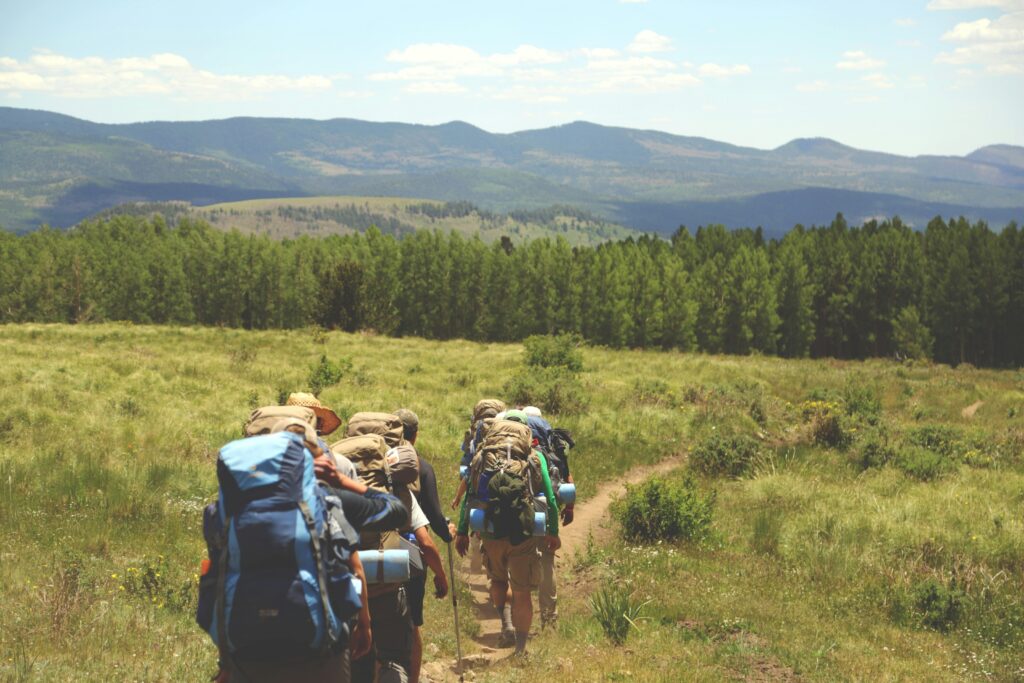I’ve read that the anticipation of a vacation can be just as exciting, if not more so, than the actual vacation. However, the logistical preparations for a vacation can be fraught with anxiety and many challenges. So many questions to ask yourselves: Should we fly or drive? Should we stay in an Air BnB or a hotel? What clothes will we need? Will we need a raincoat? What sights do we want to see or activities do we want to do? Do we need to make reservations for those sights or activities?
Among those preparations, many people forget one important thing: pre-travel exercise. You can avoid vacation injuries with pre-travel exercises like I’ve done before going skiing.
Years ago we used to go skiing every winter either out west or locally. In addition to all the gear and clothing preparation needed for such a trip, I would also get my body ready for skiing by adding ski-specific exercises to my routine to better navigate the mountain, improve my endurance, and hopefully prevent injury. I think you would have to agree that doing sport-specific exercises before an active or adventurous vacation is a wise thing to do.
However, not all vacations include obvious physical activity, like skiing. What if your vacation is mostly sightseeing such as walking around Italy or Paris, visiting museums, or even a cruise with day trips?
I have to wonder if any of you asked yourselves: Is my body ready for this type of walking vacation?
Clients Who Didn’t Avoid Vacation Injuries
- Janet wound up with a foot stress fracture after walking close to 25,000 steps per day for 10 days while in Italy.
- Beth came back from 4 very, full days in London with a tibial stress fracture.
- Debbie came in w/achilles tendinopathy after a trip to Israel.
- Joanne returned after a 5-day trip to Zion exhausted and unable to return to her usual exercise routine for a week.
What did all these patients have in common? They walked a lot more than they were used to and wound up with overuse injuries. Often, I hear from these types of patients, that they were “just walking.” How could this happen? What’s the big deal if I walk more than usual? Well, walking, like any other exercise puts stress on your musculoskeletal system as well as your muscles can fatigue just as much with walking as with running. It is known in the running world as the “too syndrome”: doing too much, too soon, and/or too intensely creating an environment for injury to happen.
At the beginning of the pandemic, my friend Amy, added an extra hour of walking each day with her much taller sister, to her usual morning one-hour exercise routine. After 4 weeks Amy had severe hip pain. Again an overuse injury as she walked faster and with longer strides to keep up with her taller sister. She suffered from the “too syndrome” as well – too much, too soon, and too intense. So, these tips are great even if you aren’t going on vacation.
Other factors that play into this are age and your general health.
Related Resource: I Can’t Do What I Did 10 Years Ago
Related Resource: Why Women Over 40 Are More Prone To Injury
Tips to Prepare and Avoid Vacation Injuries
Whether your vacation will involve a significant amount of activity, like walking in a city, sightseeing, museums, or more adventurous like hiking or skiing, your body needs to be prepared. You wouldn’t just go out and run a marathon without preparation. Nor should you go on vacation without proper preparation and more importantly understanding your limitations such as when to rest, how much you can tolerate in a day, and how to recover. And for those of you who are older, remember your body goes through a lot of changes as you get older, limiting your ability to be as active as you once were, recovery is much slower, fatigue sets in sooner, etc.
Vacation Tips: Before
- Get properly fitted for the best walking shoes for you.
- Walk 4-7x/week gradually building up to longer distances/longer times; for example – when marathon training typically the longest run done before the race will be around 20 miles or 3-4 hours. So, you do not need to walk all day to prepare for extensive sightseeing.
- Learn your body’s nutritional needs.
- Learn your body’s rest needs.
- Do some balance exercises to better handle different terrains
Vacation Tips: During
- Driving vacations – get out of the car every 1.5-2 hours – all that sitting can stiffen you up as well as create overuse injury just as if you were moving Unfortunately, I have seen many people, after driving in the car for an extensive amount of time, with significant low back issues, sometimes even needing back surgery.
- Be flexible with your vacation schedule to better accommodate your body’s needs.
- Use hiking poles, particularly in cities with cobblestone streets and of course on hiking trails. This is why it’s important to do balance exercises.
- Plan rest days of low activity to give your body some time to recover. My friends and I like to do one major activity a day and then relax the rest of the day.
- Travel days can be tiring and sitting a long time will not prime your body for a lot of movement so don’t plan a major physical activity on travel days. A short walk will suffice.
- Don’t change your pace or stride length to keep up with someone faster than you; it’s ok to walk alone.
Vacation Tips: After
- Once home – you will need time to rest and recover before returning to your usual workout routine – listen to your body.
- Injuries can show up as delayed response – be mindful of sudden pain that starts within days of returning from your trip.
Safe Travels!
So, whether you’re exploring a city, visiting museums, or going on a more adventurous trip, take the necessary steps to care for your body and ensure a safe and enjoyable vacation. Remember, your body goes through changes as you age, and it’s important to listen to its needs. Stay prepared, stay mindful, and have a wonderful vacation!









Leave a Reply